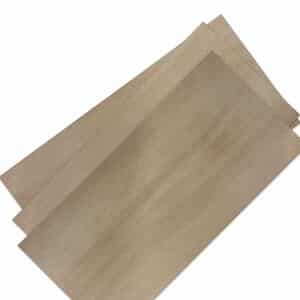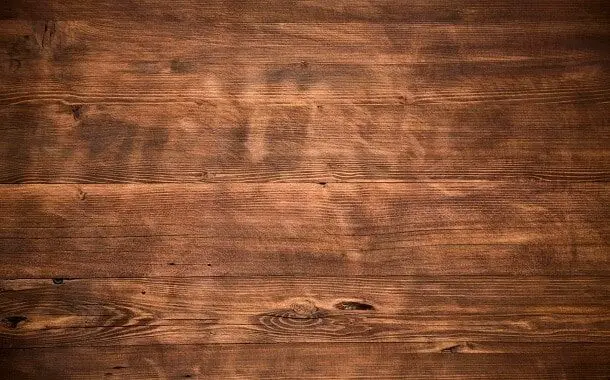Luan Plywood Cost
Last Updated on December 27, 2023
Written by CPA Alec Pow | Content Reviewed by ![]() CFA Alexander Popinker
CFA Alexander Popinker
Luan is a type of wood that comes from the lauan or lawaan tree. Even though it’s not completely accurate, some people refer to this as Philippine mahogany because when you finish your project with luan, It can look like more expensive woods such as mahogany. Luans are commonly found in Southeast Asia and other tropical regions which include Malaysia and Indonesia but also the Philippines.
Luan is often used as a lightweight alternative to plywood. It has a smooth finish and, unlike some other wood products on the market today, does not have any defects on its surface. If you, by any chance, do find some defects, they can be easily sanded or filed smooth.
How much does luan plywood cost?
If you’re looking for a low-cost material, luan is the way to go. The price range of most sheets will be between $7 and $35 per sheet; however, the thickness can vary from 1/4 inch up to 3 inches thick, and the thickness will influence the price. Average prices will be anywhere between $15 to $25, per sheet or somewhere around $0.45 to $0.70 per square foot for a 1/4-inch thick, 4’x’8′ board.
You might also like our articles about the cost of carpet installation, granite countertops, or hardwood stairs.
The cost of a ¼-inch thick piece of Luan plywood is about $15 per sheet. PlywoodPrice.net says that 1/8-inch pieces can retail for about $19 and 3/4 inch pieces can retail for up to or over $70, while the more average thicknesses range from around $18-$21 in price (depending on who you buy it from).
Luan details
Luan plywood is usually cut in four to eight feet long and can come in a variety of thicknesses, including 1/8th inch. Luan is made from tropical woods and particle board which makes it balanced, less likely to warp when installed; flexible so that it’s workable for your project; resistant against shrinking, splitting or twisting–making this type of wood perfect for any DIY enthusiast.
Any extra costs to consider?
While some retailers will measure and cut the plywood for you, most of them will charge a small fee.
If you need the plywood delivered to your worksite, the cost of shipping should also be considered.
Uses of luan plywood
 Luan plywood is often used as an underlayment for flooring material. This provides extra support and allows the finished product to be level, firm, and smooth because of its resiliency. This material can also be used with different kinds of finishes including carpet, vinyl tiles, and hardwood floors – making it an all-around go-to option.
Luan plywood is often used as an underlayment for flooring material. This provides extra support and allows the finished product to be level, firm, and smooth because of its resiliency. This material can also be used with different kinds of finishes including carpet, vinyl tiles, and hardwood floors – making it an all-around go-to option.
Luan plywood is a lightweight, inexpensive material that has multiple uses in furniture making. The thin 1/8-inch and 1/4-inch thicknesses are great for cabinet backs or the drawer sides of your desk where you need to slide it out easily. For less expensive grade furniture like tables, chairs, bookshelves, and plant boxes 3/4 inch Luan plywoods will do just fine because they’re more durable than their thinner counterparts but still cheap enough not to break the bank.
The Luan, a tropical hardwood imported from the South Pacific island of New Guinea, is an easily renewable resource. It can be processed into plywoods and has been used as door facings since the late 1950s according to Rainforest Relief. When stained red it resembles mahogany wood while white-stained Luans resemble cherry when finished with lacquer or polyurethane varnish.
Apart from large, woodworking projects such as furniture or houses that can be created with luan plywood, it is also used in making small crafts. The 1/8 inch thick plywood material is a popular choice for crafting dollhouses and birdhouses since the product will not split or splinter when cut into smaller pieces. Seeing that this type of material does not contain any knots within its surface as other woods do, many people choose to back their decorative frames with it.
Important tips to know about
Luan plywood is a light or pinkish color, but can also look more reddish depending on the type. When cutting luan plywood it’s important to cut from the back of the sheet and support either side with supporting boards while you go through this process. Cutting becomes hard because luan board tends to be thin making precision difficult for some people.
If your room is not prone to excessive moisture, consider using luan as an underlayment for vinyl flooring. You can get cheaper luan panels out of sapwood from the mahogany tree if you are looking to spend a little less money on this project. You should also make sure that the existing subfloor is securely fastened to the joists before laying down any boards or planks.
If you want to give your luan plywood a high sheen, apply two coats of polyurethane clear finish after applying dark stain. Unlike mahogany, the grainy texture and inability for it to take on patina make working with these hardwoods difficult.


Leave a Reply
Want to join the discussion?Feel free to contribute!